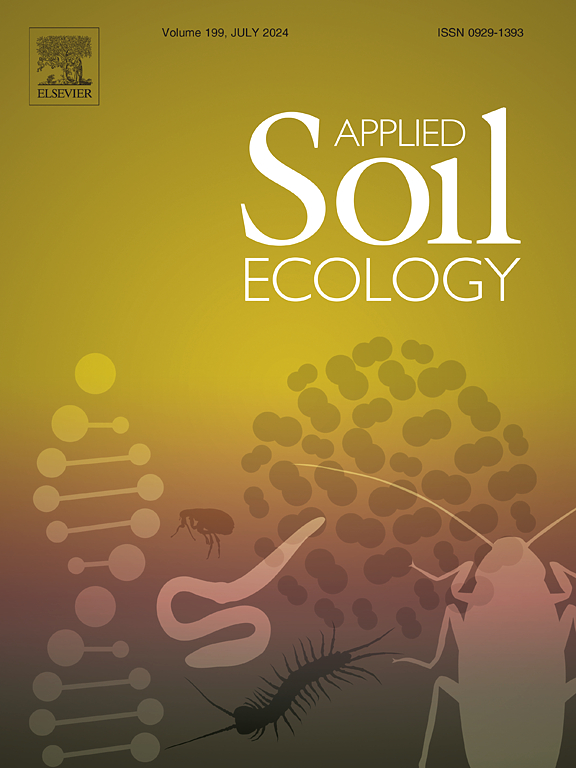Winter bioaugmentation of co-contaminated soil: Differential effects in greenhouse and open-field settings on microbial communities
IF 5
2区 农林科学
Q1 SOIL SCIENCE
引用次数: 0
Abstract
This study evaluated a winter bioaugmentation strategy using the psychrotolerant strain Microbacterium arborescens SMB19 to remediate antibiotic–heavy metal co-contaminated soils and examined its effects on microbial community functions under two contrasting environments: greenhouse warming (WTM) and open-field non-warming (CTM). Results showed that SMB19 effectively reduced antibiotic residues and bioavailable Zn concentrations. Under CTM, remediation was more effective, with higher antibiotic degradation rates and greater reductions in bioavailable metals. However, the abundance of mobile genetic elements (MGEs) and antibiotic resistance genes (ARGs) increased. In contrast, under WTM, the synergistic effect between SMB19 and indigenous microbes was weaker, but the ARG and MGE levels significantly decreased. Mantel test results revealed a stronger correlation between ARGs and microbial communities in the WTM. Network analysis showed that microbial functional groups were more dispersed in the WTM than in the highly clustered structure observed in the CTM. Functionally, CTM-enriched microbial taxa were involved in pollutant remediation and element cycling, whereas WTM-favored taxa were related to nitrogen cycling and greenhouse-specific adaptations. Functional predictions further indicated that WTM enhanced antibiotic biosynthesis pathways and CTM promoted organic matter degradation. These findings suggest that exogenous bacteria-based bioaugmentation holds great promise for cold-region soil remediation; however, greenhouse conditions must be carefully optimized to balance pollutant removal efficiency and the risk of ARG dissemination.

共污染土壤的冬季生物强化:温室和露天环境对微生物群落的不同影响
本研究评估了耐寒菌株arborescens SMB19对抗生素-重金属共污染土壤的冬季生物强化修复策略,并研究了其在温室增温(WTM)和露天不增温(CTM)两种不同环境下对微生物群落功能的影响。结果表明,SMB19能有效降低抗生素残留和生物有效锌浓度。在CTM下,修复更有效,抗生素降解率更高,生物可利用金属减少幅度更大。然而,移动遗传元件(MGEs)和抗生素抗性基因(ARGs)的丰度增加。WTM处理下,SMB19与本地微生物的协同作用较弱,但ARG和MGE水平显著降低。Mantel测试结果显示,ARGs与WTM微生物群落之间存在较强的相关性。网络分析表明,微生物功能群在WTM中比在CTM中观察到的高度集群结构中更为分散。在功能上,富ctm的微生物类群参与污染物修复和元素循环,而富wtm的微生物类群参与氮循环和温室特异性适应。功能预测进一步表明,WTM增强了抗生素的生物合成途径,CTM促进了有机物的降解。这些发现表明,外源细菌为基础的生物增强在寒冷地区土壤修复中具有很大的前景;然而,温室条件必须仔细优化,以平衡污染物去除效率和ARG传播的风险。
本文章由计算机程序翻译,如有差异,请以英文原文为准。
求助全文
约1分钟内获得全文
求助全文
来源期刊

Applied Soil Ecology
农林科学-土壤科学
CiteScore
9.70
自引率
4.20%
发文量
363
审稿时长
5.3 months
期刊介绍:
Applied Soil Ecology addresses the role of soil organisms and their interactions in relation to: sustainability and productivity, nutrient cycling and other soil processes, the maintenance of soil functions, the impact of human activities on soil ecosystems and bio(techno)logical control of soil-inhabiting pests, diseases and weeds.
 求助内容:
求助内容: 应助结果提醒方式:
应助结果提醒方式:


